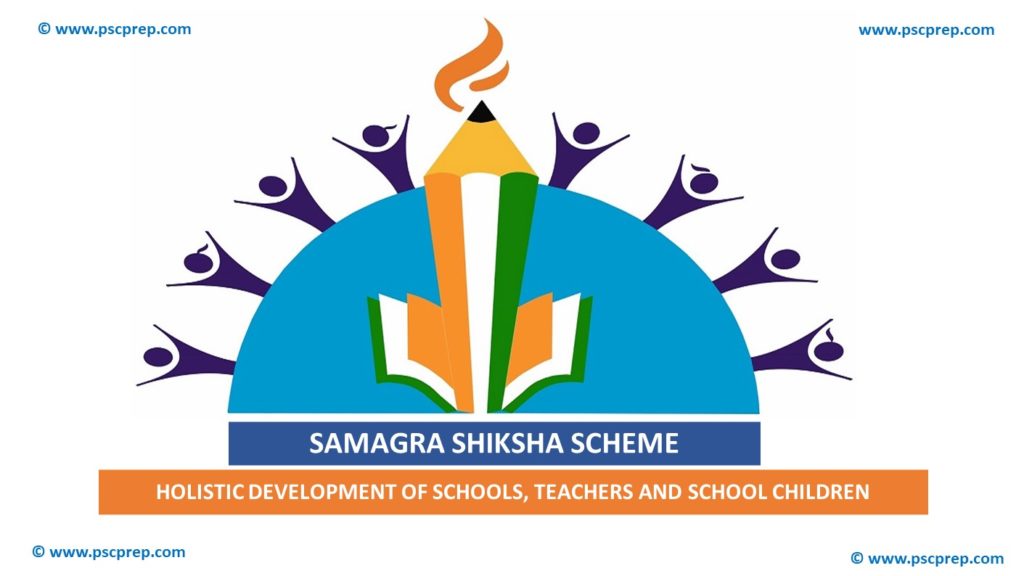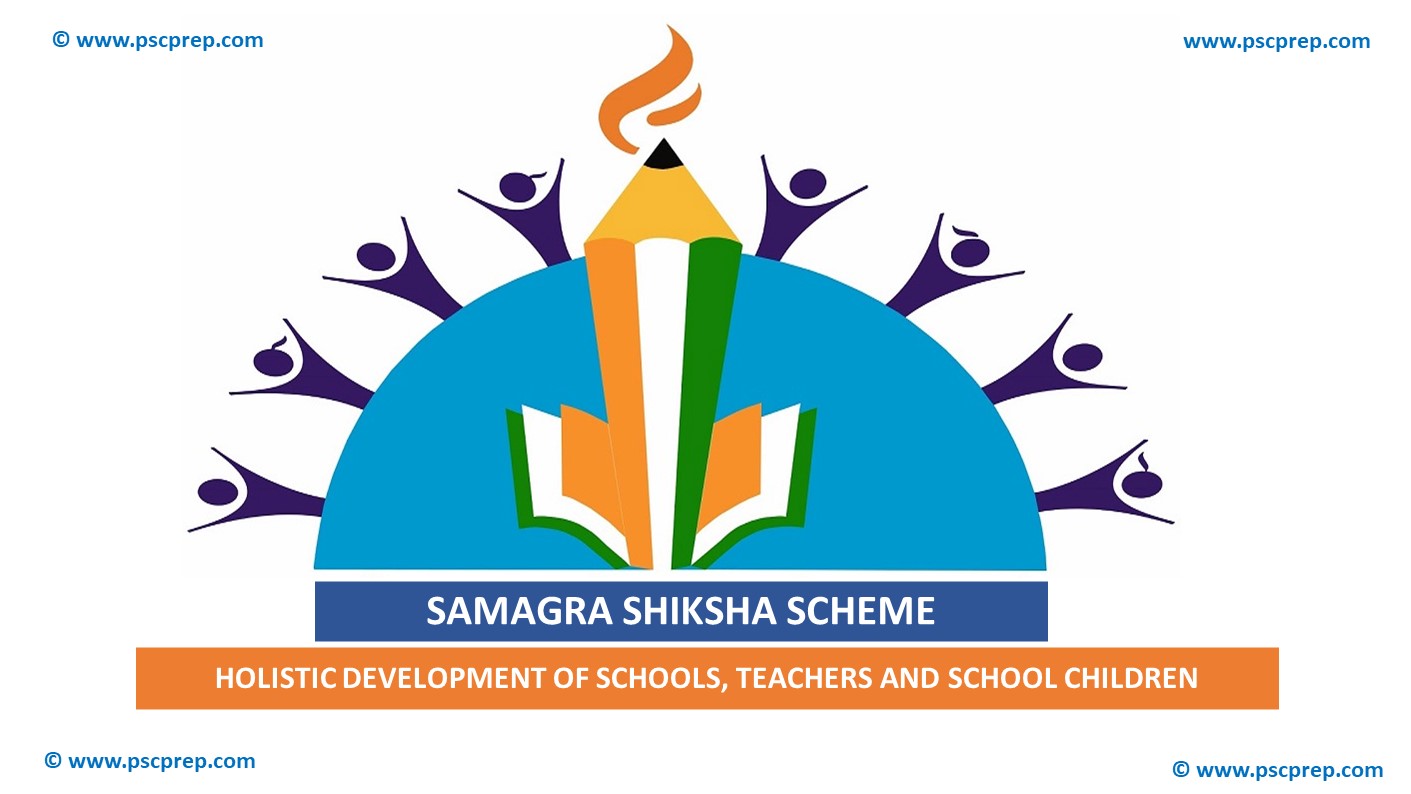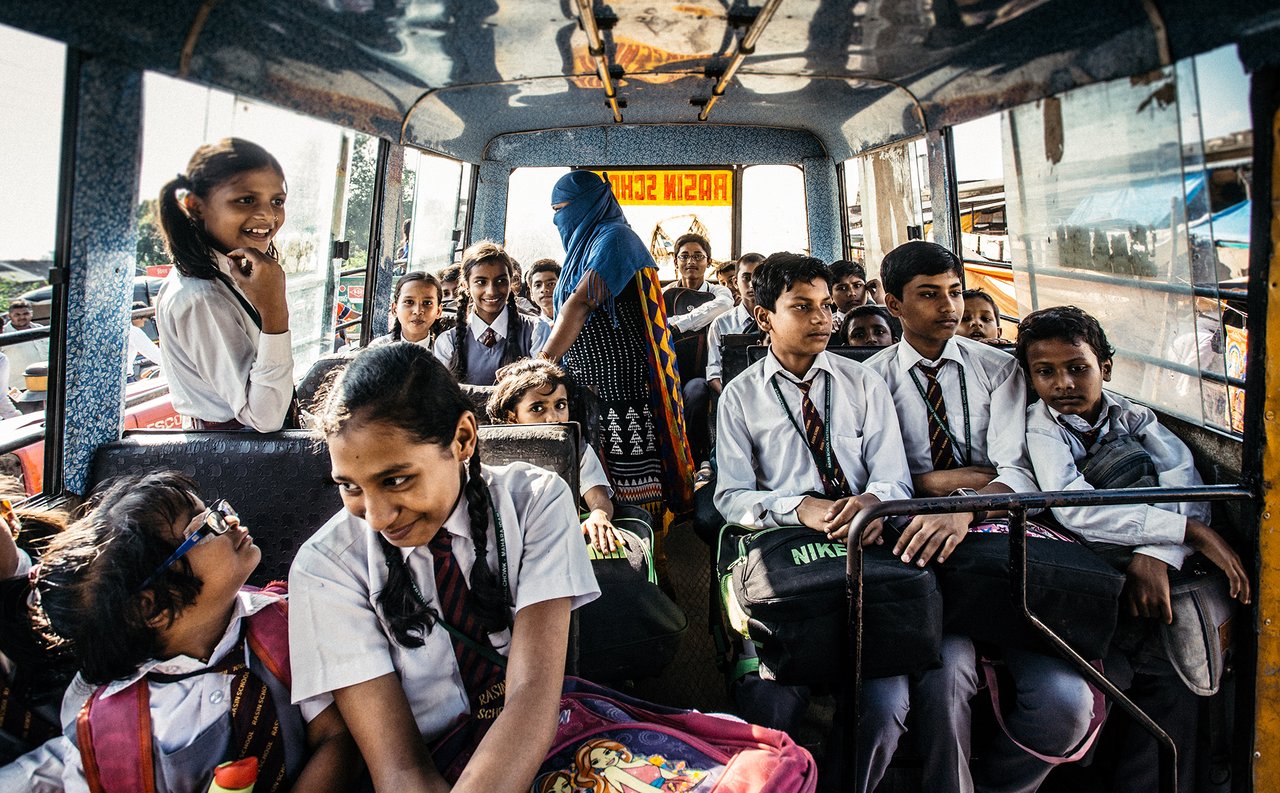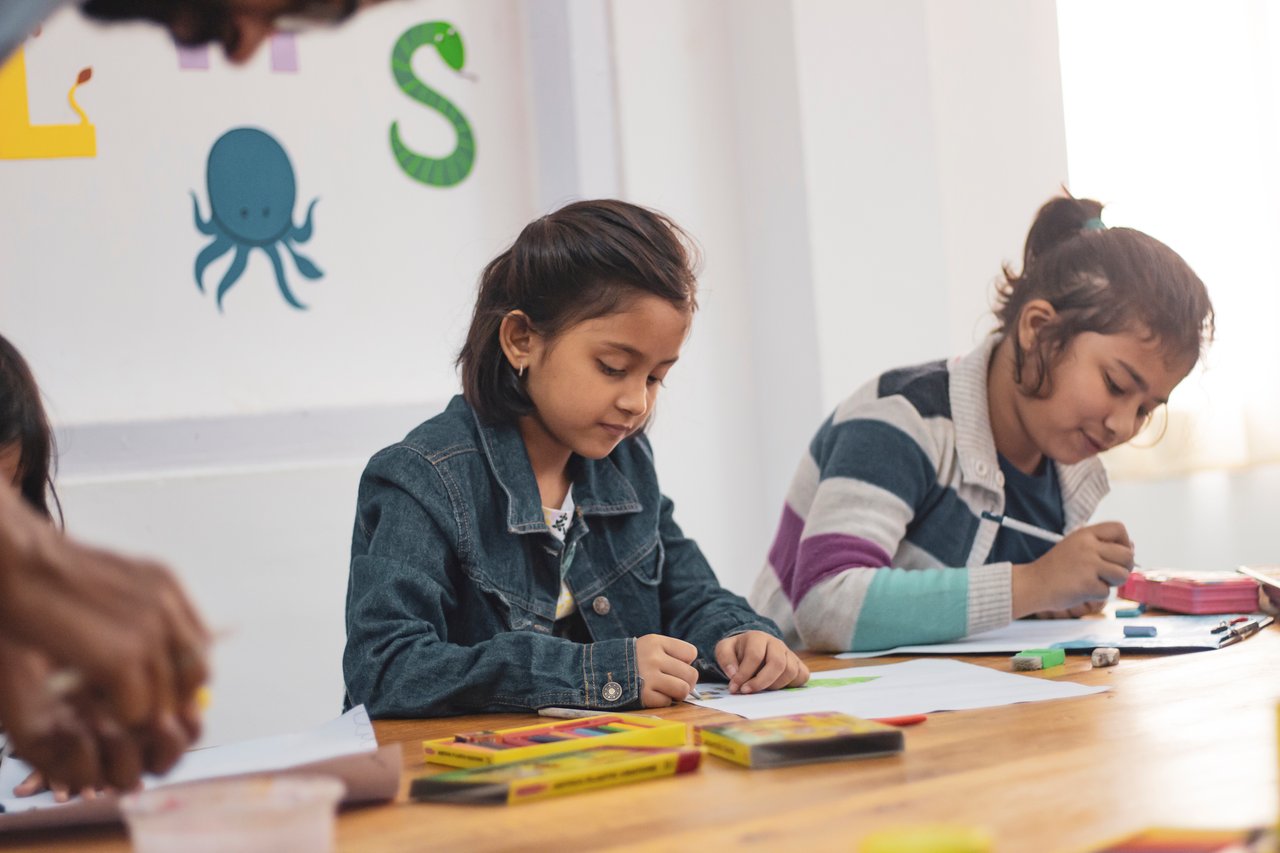
Samagra Shiksha Scheme
Samagra Shiksha Scheme is an Integrated Scheme for School Education that has been launched throughout the country as a Centrally Sponsored Scheme with effect from the year 2018-19. Samagra Shiksha Scheme subsumes the three erstwhile Centrally Sponsored Schemes of Sarva Shiksha Abhiyan (SSA), Rashtriya Madhyamik Shiksha Abhiyan (RMSA) and Teacher Education (TE). It is an overarching programme for the school education sector extending from pre-school to class XII and aims to ensure inclusive and equitable quality education at all levels of school education. It envisages the ‘school’ as a continuum from pre-school, primary, upper primary, secondary to senior secondary levels. The main emphasis of the Scheme is on improving the quality of school education by focussing on the two T’s – Teacher and Technology.

Samagra Shiksha Scheme: Vision
The vision of the Samagra Shiksha Scheme is to ensure inclusive and equitable quality education from pre-school to senior secondary stage in accordance with the Sustainable Development Goal (SDG) for Education.
SDG-4.1: Aims to ensure that all boys and girls complete free, equitable and quality primary and secondary education leading to relevant and effective learning outcomes.
SDG 4.5: Aims to eliminate gender disparities in education and ensure equal access to all levels of education.
The scheme mainly aims to support States in the implementation of the Right of Children to Free and Compulsory Education (RTE) Act, 2009.
Right to Education Act (RTE) is a fundamental right under Article 21-A of the Constitution of India.
Samagra Shiksha Scheme: Objectives
The main emphasis of the Scheme is on improving quality of school education and the strategy for all interventions would be to enhance the Learning Outcomes at all levels of schooling. The Objectives of the Samagra Shiksha are:
(a) Provision of quality education and enhancing learning outcomes of students
(b) Bridging Social and Gender Gaps in School Education
(c) Ensuring equity and inclusion at all levels of school education
(d) Ensuring minimum standards in schooling provisions
(e) Promoting Vocationalisation of education
(f) Support States in implementation of Right of Children to Free and Compulsory Education (RTE) Act, 2009
(g)Strengthening and up-gradation of SCERTs/State Institutes of Education and DIET as nodal agencies for teacher training.
Samagra Shiksha Scheme: Funding Pattern
The Scheme is being implemented as a Centrally Sponsored Scheme.
The fund sharing pattern for the scheme between Centre and States is at present in the ratio of 90:10 for the North-Eastern States and the Himalayan States and 60:40 for all other States and Union Territories with Legislature.
It is 100% centrally sponsored for Union Territories without Legislature.
The scheme also proposes to give flexibility to the States and UTs to plan and prioritize their interventions within the scheme norms and the overall resource envelope available to them.

Samagra Shiksha Scheme: Major Features
(i) Universal Access including Infrastructure Development and Retention
(ii) Gender and Equity
(iii) Inclusive Education
(iv) Quality
(v) Financial support for Teacher Salary
(vi) Digital initiatives
(vii) Entitlements under the Right of Children to Free and Compulsory Education (RTE) Act, 2009 including uniforms, textbooks etc
(viii) Pre-school Education
(ix) Vocational Education
(x) Sports and Physical Education
(xi) Strengthening of Teacher Education and Training
(xii) Monitoring of the scheme
Details of the major features of Samagra Shiksha Scheme:
Details of the main features, inter alia, are as follows:
- Universalizing access to quality school education by expansion of schooling facilities in the uncovered areas through up-gradation of schools up-to senior secondary level.
- Ensuring availability of adequate infrastructure to ensure that schools conform to the prescribed norms.
- Annual Grant of Rs. 5,000 to Rs. 20,000/- per school for strengthening of Libraries.
- Composite school grant of Rs. 25,000-1 Lakh to be allocated on the basis of school enrolment.
- Annual Grant for sports equipment at the cost of Rs. 5000 for Primary Schools, Rs. 10,000 for upper primary schools and up to Rs. 25,000 for secondary and senior secondary schools.
- Allocation for children with Special Needs (CwSN) of Rs. 3,500 per child per annum including a stipend of Rs. 200 per month for CWSN girls to be provided from Classes I to XII.
- Allocation for uniforms at the rate of Rs. 600 per child per annum.
- Allocation for textbooks at the rate of Rs. 250/400 per child per annum.
- Upgradation of Kasturba Gandhi Balika Vidyalayas (KGBVs) from Class 6-8 to Class 6-12.
- Strengthening Teacher Education Institutions like SCERTs and DIETs to improve the quality of teachers.
- Enhanced use of digital technology in education through smart classrooms, digital boards and DTH channels.
- Support States & UTs for implementation of provisions of RTE Act, including reimbursement under Section 12(1)(c) of the Act.
- Setting up of residential schools and hostels for difficult areas and for children in difficult circumstances.
- Under the scheme, a vocational subject is offered for Classes IX to XII along with the general education to provide necessary employability and vocational skills for a variety of occupations.

Besides this, approval has been given to States and UTs for setting up of Youth and Eco Club in Government Schools in 2019-20 under Samagra Shiksha. Youth clubs in schools are an instrument to develop life skills, build self-esteem, develop self-confidence and resilience. Eco clubs in schools aim to empower students to participate and take up meaningful environmental activities and projects.
Realizing the need for holistic development of children, under the Samagra Shiksha, Sports and Physical Education component has been introduced for the first time for encouragement of Sports, Physical activities, Yoga, Co-curricular activities etc.The scheme includes the Sports and Physical Education component under which provision for grants for sports equipment for indoor and outdoor games in all government schools has been made.

Read more about:
Pradhan Mantri MUDRA Yojana (PMMY)
Differences between NELP and HELP
Official Website of Samagra Shiksha